Barbus Schubert: what does it look like and how to care for it?
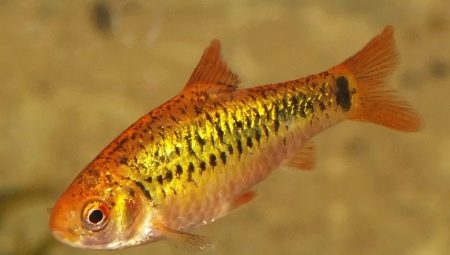
Schubert's barbus is a beautiful and interesting aquarium fish obtained under artificial conditions from the green barbus that lives in southern China. The fish has a unique color, which is considered a clearly inherited trait - this was the discovery of Tom Schubert, and the pet got its name in his honor.

Description and character
Almost all Schubert barbs that can be found in the aquarium are the result of artificial cultivation, so their color is different from the color of their greenish wild counterparts. The aquarium fish is yellow-gold in color with black dots and stripes. By adulthood, individuals develop small antennae in the corners of the mouth. The fins of the Schubert barbus are colored red, and the caudal fin is bifurcated. The size of one individual usually reaches a maximum of 7 cm, and the life expectancy is limited to five years.
In general, these are quite mobile, playful creatures, but they can also show aggression. In part, these are predatory fish that do not get along with every aquarium inhabitant.
To make the barbs feel comfortable and not show aggression, it is recommended to buy fish in flocks of six or more individuals, then the group will have its own hierarchy. If there are fewer fish in the flock, then they are not interested in each other, they start to get stressed, as a result of which the barbs attack their neighbors.
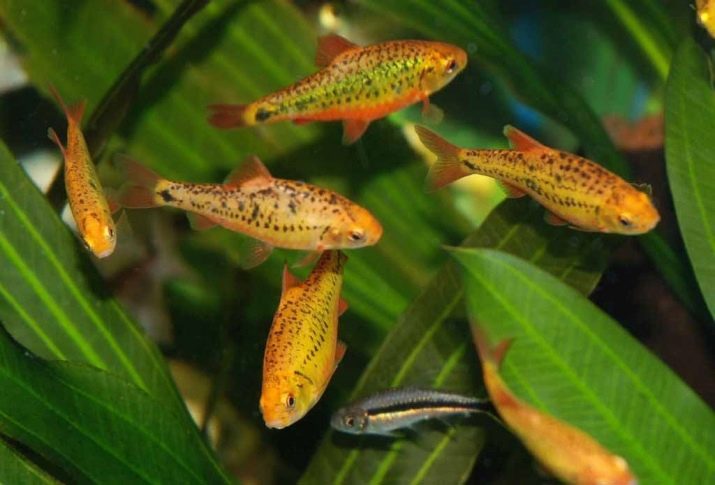
Sex differences
You can distinguish between males and females by color. Females are more faded, they have a rounded large abdomen. The female is larger in size.Males are more saturated in color and compact in size; during the spawning period, their fin turns red. This is the case when females and males are not difficult to distinguish at all.

Care and maintenance
The maintenance of these fish is not difficult, they are picky about leaving. Schubert's barbus is even suitable for beginner hobbyists. They are energetic fish that need to find a spacious aquarium where they can swim without any problems. So, for 8–12 individuals, a container with a volume of at least 100 liters and a length of 70 liters or more is suitable. In general, these fish prefer to spend more time in the lower and middle water layers, but despite this, they tend to jump out of the aquarium during active play, so be sure to equip the aquarium with a lid.
The water must be clean and oxygenated. These conditions will be able to filter and aeration system... If the filter is internal, remember to clean it every week. And Change 30% of the total volume of water weekly, use water that has settled during the day.
The recommended temperature limits for the content of Schubert's barbus are + 18– + 24 degrees, acidity - 6.5–7.5, hardness - 10–16.
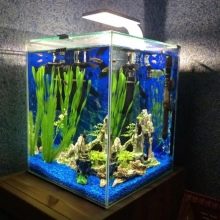
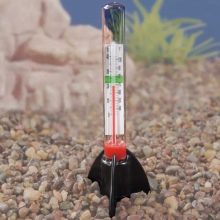
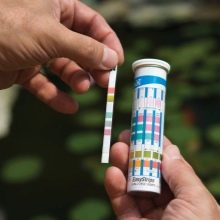
In order to further enrich the water with oxygen, it is recommended to equip green spaces in the tank. Any types of plants will do, their choice may be due, for example, to their decorative function. Plant thicker vegetation, but leave free spaces where the fish can move freely.
As a soil, give preference to dark colored pebbles - it is against a dark background that the contrasting color of Schubert's barbus will look very harmonious. For shelters, any grottoes, caves, pots are suitable.


Feeding
Schubert's barbs are considered omnivorous fish, but the owner must monitor their diet, since the quality of the offspring, the color of the fish and the health of the pets depend on the variety of the menu. In their natural environment, barbs prefer to feast on worms, larvae and algae. In aquarium conditions, bloodworms, small earthworms and various insects are suitable as live food. It is customary to offer live food 2-3 times a week.
Dry ready-made feed is well absorbed by Schubert barbs, although it is not recommended to completely replace live feed with it. It is important to feed your fish with plant-based foods such as squash, spinach, cucumbers, cabbage and lettuce leaves.
Feed the barbs in dosage, as they are prone to obesity, and this is bad for their health. The food is offered 2-3 times a day.


Diseases
These fish do not have strong immunity and can often get sick. Almost all diseases are treatable, but it is important to establish the cause of the disease in time. The most common disease for this type of fish is gill rot. It is dangerous in that it quickly spreads to all individuals. Treatment is possible at an early stage. The main signs of the disease are loss of appetite, passivity, an infected fish begins to rub its gills against various objects, and the formation of blue spots on the gills is possible. Treatment is carried out with the drug "Rivanol" in the general aquarium.
As already mentioned, barbs are often obese. The cause is uncontrolled feeding, and the symptoms of the disease include overweight, roundish fish, passive behavior. For treatment, a diet is prescribed for 2-3 days and a review of the diet.
In a poorly cleaned aquarium or in too cool water, another ailment characteristic of the barbus can occur - fin rot. You can recognize the disease by discoloration of the fins and cloudy eyes. In this case, it is recommended to change the conditions of detention.

Compatibility
A school of barbs gets along well with many species of mobile small fish. To prevent barbs from behaving aggressively towards neighbors, you need to keep them in a group.In any case, in order to avoid conflicts, it is not recommended to settle along with barbs slow veiled individuals, such as cockerels, lalius, marble gourami - these fish may be left without fins, being in the company of barbs. A peaceful neighborhood can develop with zebrafish rerio, Sumatran barbus, denisoni.
These fish get along well with large invertebrates, for example, shrimps, but small species can become prey for the barbus.
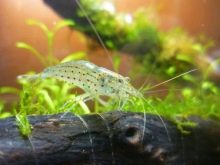
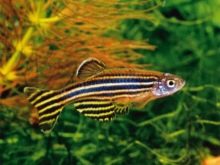
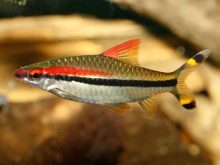
Breeding
Reproduction of Schubert's barbs also does not seem difficult, although it requires a certain amount of time. A week before spawning, the female and male individuals are separated from each other and begin to feed abundantly with live food. At this time, you can prepare a spawning ground. First of all, plant small-leaved plants, such as javan moss, in a separate aquarium, or install a net. It is better if about 10 cm remains from the top of the greenery to the surface of the water in order to keep some of the eggs from being eaten by their own parents.
Equip a grotto in a container to shelter the female, as her lover becomes aggressive during the spawning period and may even kill his lady. Usually, two males and one female are planted in the spawning grounds, although breeding in a separate pair or in a flock is possible... The water temperature favorable for spawning is +28 degrees, it is recommended to gradually increase it from +23 degrees. The pH level is between 6.5 and 7.5.
If a filter is used in the spawning box, set it to the minimum power. The lighting should not be intense, use weakened dimmed lighting fixtures.
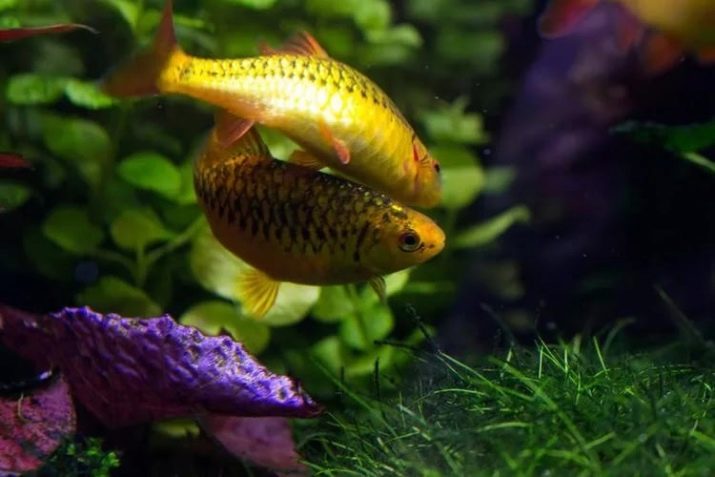
Fish become sexually mature at 8 months... Females are selected large, dense, well-fed; among males, give preference to beautiful bright individuals with a rich color. Spawning occurs in the early morning. The male chooses a place for breeding, he performs a mating dance and forces the female to swim to the selected site. Then the female spawns 100-200 eggs, after which the male fertilizes them. Gluttonous parents are not averse to feasting on their own cubs, therefore, at the end of spawning, they are put back.
Within a few days, fry will hatch from the eggs. At first, the young will feed on the contents of the yolk sac, and when they start swimming on their own (for about 4 days), their feeding will fall on the shoulders of the owner. The starting food can be ciliates, egg yolk, special food for fry. At one week of age, you can switch to micro-feed, and on day 10, feeding with a sifted small cyclops is allowed. From 3 months old bloodworms can be offered, and from 4 months babies are fed in the same way as adults.
It is recommended to keep the aquarium in the shade for several weeks, as both eggs and fry are very sensitive to light.
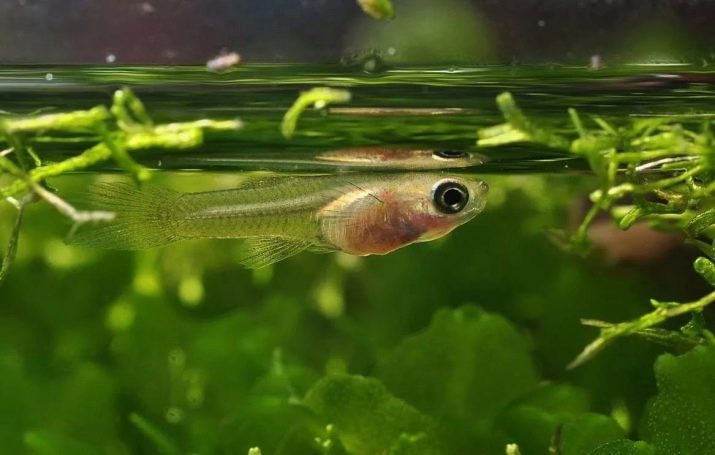
You will learn more about the content of Barbus Schubert later.








